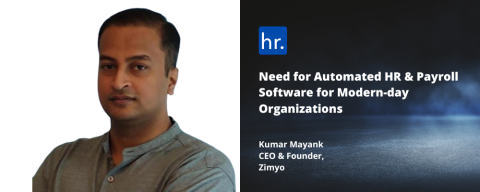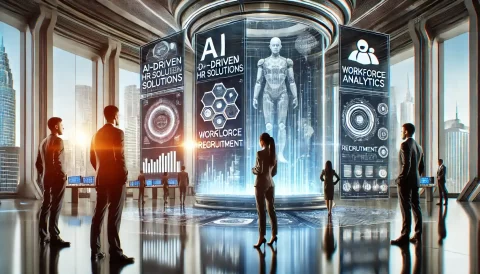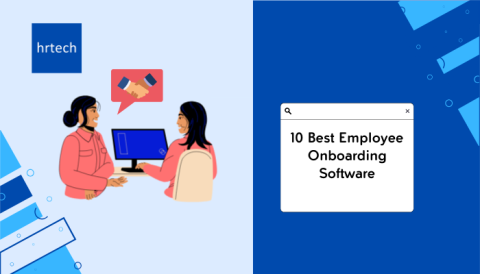Successful businesses are able to navigate such difficulties through the necessary foresight of utilizing an HRMS that will enable fluidity in their business dealings and other administrative tasks.

A public service announcement:
There is a need to start revamping your HR processes today.
At QuickHR, we’ve observed that many businesses are rather content with their archaic HR systems. This has left them at a severe disadvantage when compared to their competitors who are modernizing or have already modernized. What do I mean by this? Let me explain.
As we progress further into the 21st century, means of carrying out work are continuously changing and are subject to conditions in the wider business environment. For instance, the gig economy and COVID-19. Both these phenomena have undoubtedly caused a disruption at the workplace, severely disrupting the traditional 9-5 job. Indeed, the sudden emergence of freelance workers, temporary gig workers, multiple store outlets, working from home, temperature scanning needs, all of these are just some of the results of the ever-changing conditions in the 21st-century business environment.
Successful businesses are able to navigate such difficulties through the necessary foresight of utilizing an HRMS that will enable fluidity in their business dealings and other administrative tasks. Companies that haven’t already transitioned their systems to such an HRMS will undoubtedly suffer a setback as a result of heavily manual processes, having lots of lags in their operations. For instance, improper scheduling systems or late salary payments to their employees, causing them to stumble at very early hurdles. How then would they be able to power through such times of unpredictability?
Resistance to change is natural as digitizing systems and processes to be more mobile can prove cumbersome. HR, traditionally in charge of protecting the interests of employees, should serve as a change management agent to encourage management to be more patient but decisive. Instead of rushing a new process, there is a need to adopt a structured, step-by-step method, to successfully incorporate a disruptive, new technology.
That’s why at QuickHR, the crucial issue we realized that had to be addressed was how we ought to carry HR with us on the go, while also keeping in line with COVID-19 measures with a solution that is simple, yet effective. That’s when we had the idea to utilize next-generation biometric technologies, while also taking HR with us in our pocket, all to help improve the workforce management capabilities of businesses. Before releasing the product into the market, however, we did our own internal tests, ensuring that our employees were familiar with the hardware themselves. It was through rigorous periods of patient testing, that we were able to finally the highest possible functionality.
So, how does a mobile HR app, and our biometric machines for that matter, help companies navigate the business in the 21st century?
With our mobile app, businesses will no longer have to worry about scheduling and attendance. Multiple work outlets? Working from home? No issue. Our mobile app is equipped with geo-locational capabilities. Bolstered by facial recognition technology, any employee can clock in and out, regardless of where and when their shifts might take place! Additionally, when submitting claims or leave applications, managers are able to immediately approve applications, and employees will receive real-time updates! Truly, this is HR on the go, with many essential features of a traditional HR system available at your fingertips.
Not forgetting our biometric devices, they too come in handy. These devices are synced across the entire QuickHR ecosystem. So, when an employee scans their temperature and clocks in at a certain location, this information would be available to others via real-time analytics! Integrated with the whole QuickHR ecosystem, these devices and all their information captured can be utilized for various purposes such as running employee payroll, attendance, overtime, and employee performance management. Without a doubt, all of this helps to streamline any workflow with minimal fuss.
The world is changing very rapidly and the crux of every business is its human capital and the efficient management of its assets. QuickHR with its adoption of the latest Artificial Intelligence and Machine Learning technology is well poised to help companies bridge this legacy/generation gap and embrace the workforce of the future.
All in all, these solutions offered by QuickHR allow companies to go on unencumbered by the changing 21st-century work trends. Even as people are out and about, our software enables traditional HR tasks to be completed with little to no difficulty, all in accordance with local regulations. This not only helps companies to maintain fluidity as compared to businesses still relying on manual HR systems but also empowers them to navigate ever-changing work environments and circumstances. QuickHR, truly enabling agility for the next generation agile workforce.
QuickHR on hrtech.sg marketplace & 2021 Singapore HRTech Marketmap
About the author:

Sukvheer Singh Bajaj is the managing director of QuickHR. Graduating with a Master’s Degree in Finance from Cass Business School, he has sought to revolutionize the workspace by introducing a democratizing HRMS that would ensure a cost-effective and robust integrated management system available for businesses of all sizes in the global market. Under his guidance, QuickHR has gone on to help many companies streamline their HR processes and has served over 2000 clients to date. In his spare time, Sukvheer Bajaj enjoys spending time with his family and the occasional game of football. You can find him on LinkedIn.




